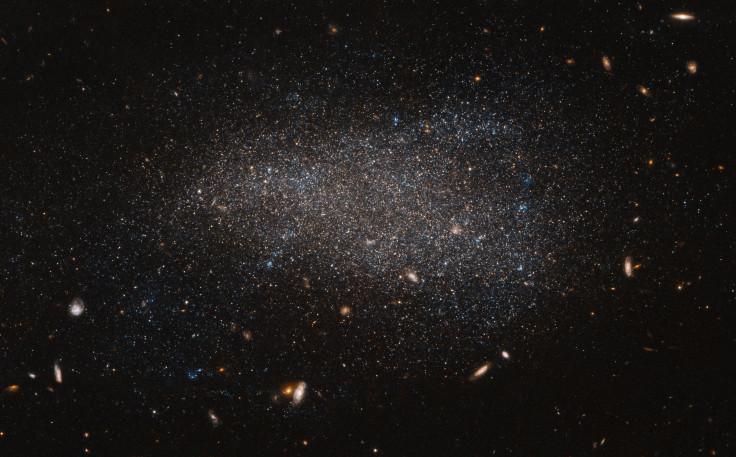Hubble Space Telescope Photographs NGC 4789A — A Dwarf Galaxy 14 Million Light-Years Away

NASA on Friday released a new image of the irregular dwarf galaxy NGC 4789A captured by the Hubble Space Telescope. The image, which shows gas, dust and stars spread across the sky in a disorderly and irregular jumble, also reveals several other, far more distant galaxies that appear as fuzzy shapes in the background.
“These stars may look as if they have been randomly sprinkled on the sky, but they are all held together by gravity,” NASA explained in a statement accompanying the image. “The colors in this image have been deliberately exaggerated to emphasize the mix of blue and red stars. The blue stars are bright, hot and massive stars that have formed relatively recently, whereas the red stars are much older.”
The presence of both old and young stars indicates that stars have been forming in this galaxy throughout its history.
Astronomers believe that dwarf galaxies are the building blocks that formed larger galaxies billions of years ago in the early universe. Dwarf galaxies usually contain roughly 200 million to a few billion stars, as opposed to their bigger galactic counterparts, which can contain hundreds of billions of stars.
“At a distance of just over 14 million light-years away NGC 4789A is relatively close to us, allowing us to see many of the individual stars within its bounds,” NASA said.
The Hubble Space Telescope was launched aboard NASA’s space shuttle Discovery on April 24, 1990. Since then, it has not only captured an unimaginable number of truly spectacular nebulae and galaxies, it has also peered back over 13 billion years to look at our cosmos in its infancy, giving us, as NASA aptly put in an earlier statement, “a front row seat to the awe inspiring universe we live in.”
© Copyright IBTimes 2024. All rights reserved.






















